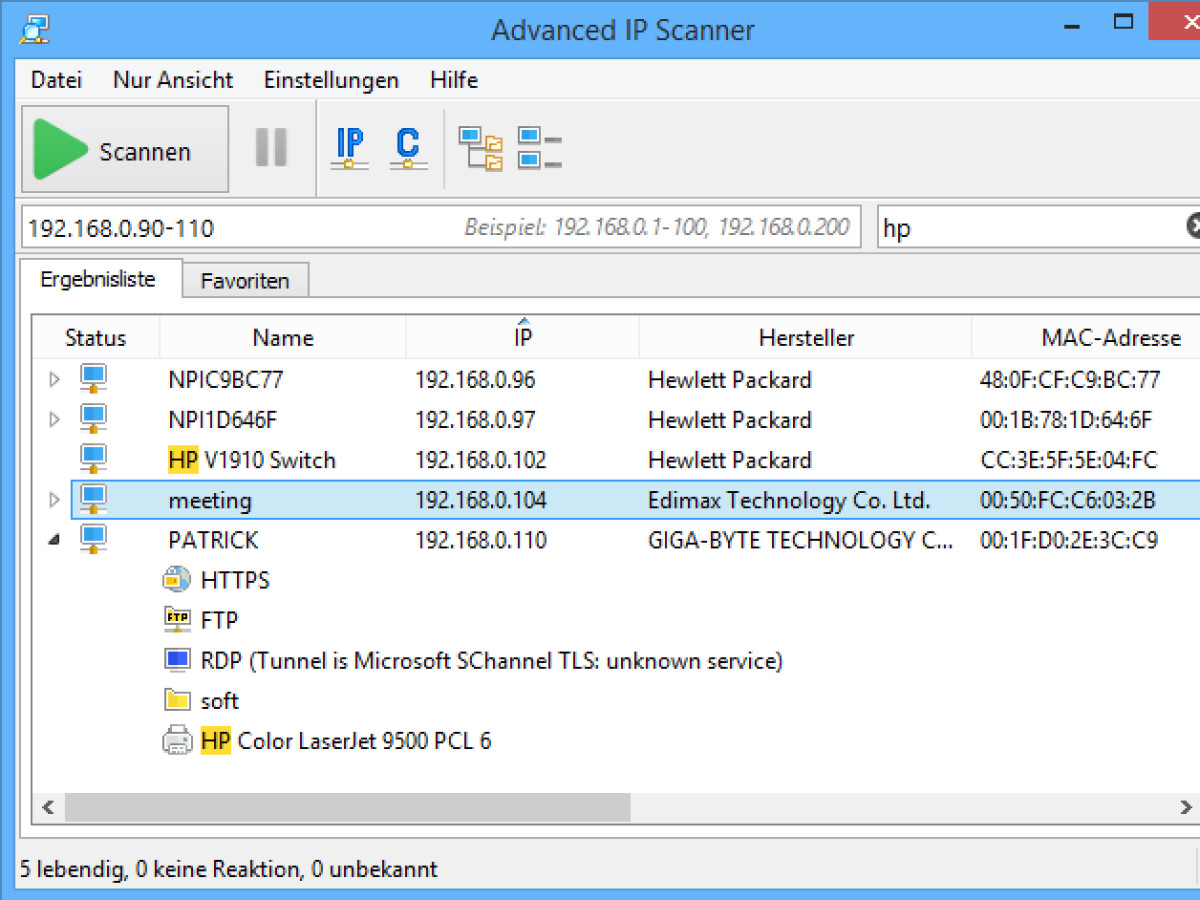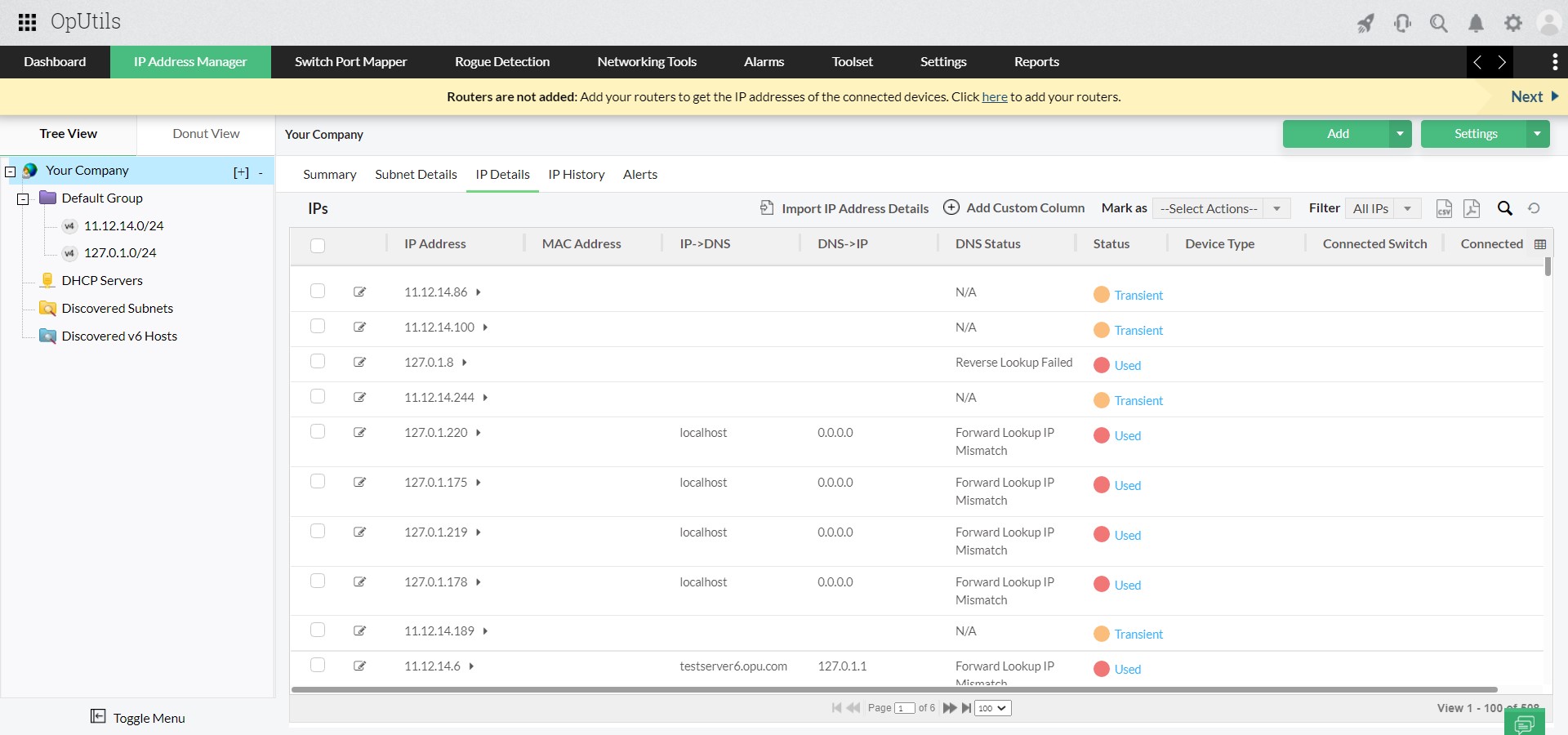Advanced IP Scanner Overview

Advanced IP Scanner is a comprehensive network scanning tool designed to provide a detailed overview of devices connected to a network. It offers a wide range of features and capabilities, including IP address and MAC address discovery, port scanning, and remote access capabilities.
Advanced IP Scanner is a free and open-source network scanner that can be used to discover and manage devices on a network. It is available for Windows, macOS, and Linux. Advanced IP Scanner can be used to scan for devices on a network, view device information, and perform remote actions such as pinging and waking devices.
It can also be used to export device information to a variety of formats, including CSV, XML, and JSON. You can find more information about Advanced IP Scanner at advanced ip scanner.
Advanced IP Scanner is primarily targeted at network administrators and IT professionals who need to monitor and manage network devices. It can also be useful for home users who want to gain insights into their home networks and identify potential security risks.
Advantages and Limitations
Advanced IP Scanner offers several advantages over similar tools. It is free and open-source, making it accessible to a wide range of users. It also has a user-friendly interface that makes it easy to use, even for beginners.
Advanced IP Scanner is a free and easy-to-use network scanner that can quickly scan your network for IP addresses, MAC addresses, and other information. It can also be used to scan for specific devices, such as the HP Color LaserJet Pro MFP 4301fdw.
Advanced IP Scanner is a valuable tool for network administrators and anyone who wants to manage their network more effectively.
However, Advanced IP Scanner also has some limitations. It is not as feature-rich as some commercial network scanning tools, and it may not be suitable for large-scale networks or complex scanning requirements.
Advanced IP Scanner Usage Guide

Advanced IP Scanner is a comprehensive network scanning tool that offers a wide range of features for IT professionals and network administrators. This guide provides a step-by-step walkthrough of using Advanced IP Scanner effectively, including tips and tricks for optimizing scans and troubleshooting common issues.
Scanning Networks
- Launch Advanced IP Scanner and select the target network range from the ‘Network Range’ field.
- Click on the ‘Scan’ button to initiate the scanning process.
- The scan results will be displayed in a table, including IP addresses, hostnames, MAC addresses, and other relevant information.
Viewing Results
- The scan results can be filtered and sorted by various criteria, such as IP address, hostname, or MAC address.
- Double-clicking on a specific host will open a detailed view with additional information, such as operating system, open ports, and shared resources.
- The results can be exported to various formats, including CSV, XML, and HTML.
Customizing Settings, Advanced ip scanner
- Advanced IP Scanner offers a range of customization options to tailor the scanning process to specific needs.
- Users can adjust scan parameters, such as the timeout value and the number of threads used for scanning.
- Additional plugins can be installed to extend the functionality of Advanced IP Scanner.
Advanced IP Scanner Network Management Applications

Advanced IP Scanner finds practical applications in network management, offering a comprehensive suite of features for IP address management, network monitoring, and troubleshooting.
IP Address Management
- Easily scan networks to discover all connected devices, including IP addresses, MAC addresses, and hostnames.
- Assign static IP addresses to specific devices to ensure network stability and simplify device management.
- Track IP address usage and identify duplicate or unused addresses to optimize network resource allocation.
Network Monitoring
- Continuously monitor network devices for uptime, response time, and other performance metrics.
- Set thresholds and receive alerts for potential network issues, enabling proactive troubleshooting.
- Generate detailed network reports for analysis and documentation purposes.
Troubleshooting
- Quickly identify network connectivity issues by performing ping, traceroute, and port scanning tests.
- Troubleshoot remote desktop connections and identify network configuration errors.
- Assist in resolving DNS issues and ensuring network services are accessible.